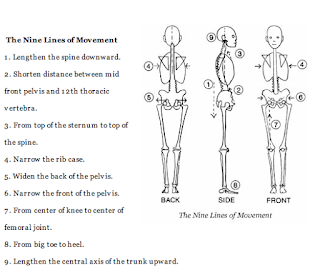Connectivism and Combinatorial Creativity
In a blog post by Adesola Akinleye, Connectivism is looked as a fundamental feature of the MAPP course. Akinleye uses two theorist's ideas on connectivism to establish how they are linked to our practice within dance.
George Siemens sees connectivism as a means for a more socially connected process of learning that can eliminate a contrived instructivist or self-regulated approach. This can take many levels; at a biological level where neurons are firing and forming new connections to networked learning where one takes concepts and applies them to their pre-established understanding to form conceptual connections. Most commonly connectivism is seen everyday in networked learning from external social platforms (blogs, social media etc.)
This Combinatorial Creativity can be applied to how dance has evolved over time. At a biological level, a sense of movement is instilled in everyone at birth and dance has been seen in the earliest of records. As dance has evolved, networked learning has allowed dance to be formalised into different styles and techniques with different concepts or objectives contributing to how these disciplines have been shaped. Most recently in the globalised 21st century, external social spaces have allowed dance practitioners and creators a wider space to form conceptual connections influenced by networks in all four corners of the world. This has allowed for a more cross-genre inclusive dance environment; or more combinatorial creativity in dance.
What interests me in Steven Downes theory of connectivism is his thought that for a network to be successful it requires four characteristics: Autonomy, Diversity, Interactivity and Openness. It seems very apparent that these are strong changes that are happening to dance institutions around the world in order to survive in this globalised era. Diversity in the work place with more BAME practitioners and female leaders, Interactivity in cultural institutions with people of all walks of life being encouraged to engage with the arts, Openness in management and outreach initiatives, Autonomy in dance programming and creative opportunities for up and coming dancers; these are all things which are seemingly taking place to transform dance into a successful socially transformative force for the current era and beyond. Connectivism in action.
George Siemens sees connectivism as a means for a more socially connected process of learning that can eliminate a contrived instructivist or self-regulated approach. This can take many levels; at a biological level where neurons are firing and forming new connections to networked learning where one takes concepts and applies them to their pre-established understanding to form conceptual connections. Most commonly connectivism is seen everyday in networked learning from external social platforms (blogs, social media etc.)
This Combinatorial Creativity can be applied to how dance has evolved over time. At a biological level, a sense of movement is instilled in everyone at birth and dance has been seen in the earliest of records. As dance has evolved, networked learning has allowed dance to be formalised into different styles and techniques with different concepts or objectives contributing to how these disciplines have been shaped. Most recently in the globalised 21st century, external social spaces have allowed dance practitioners and creators a wider space to form conceptual connections influenced by networks in all four corners of the world. This has allowed for a more cross-genre inclusive dance environment; or more combinatorial creativity in dance.
Overview Of Connectivism- Dr. George Siemens
Five minutes on Connectivism- Steven Downes

Comments
Post a Comment